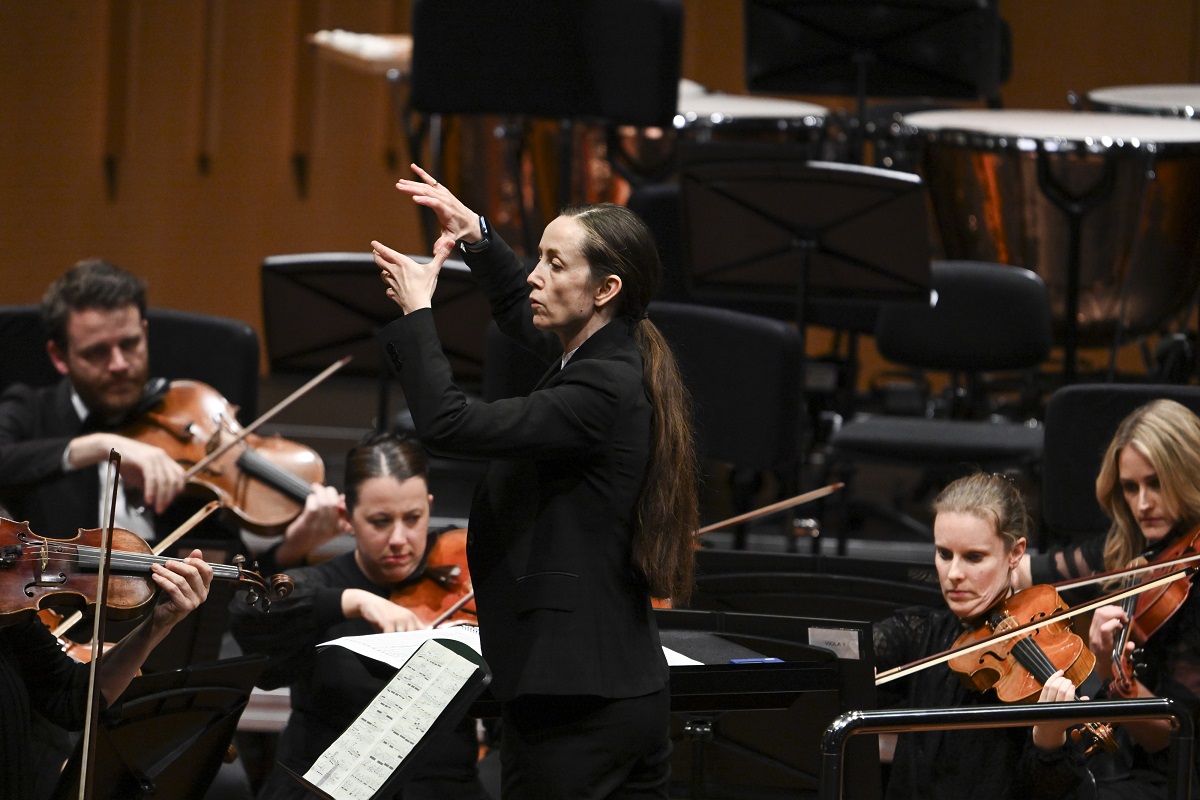
Music / Celestial Visions, Canberra Symphony Orchestra. At Llewellyn Hall, September 18. Reviewed by ROB KENNEDY.
This concert showed how composers find inspiration in the vastness of the firmament to create mesmerising scores that captivate the senses through the power of imagination.
Under Jessica Cottis, chief conductor and artistic director, the Canberra Symphony Orchestra began with a work titled Stars Come Out in a Midnight Sky by Caerwen Martin, an Australian composer and cellist. Martin creates graphic and alternative notation for some of her scores.
For strings only, harmonics opened this gentle work. Like breathing, it pulsed and slid through a developing tonal theme. Quite cinematic in its scope, it rarely got above a moderate dynamic. It didn’t say a lot, yet it said everything. It beguiled.
Mozart’s Piano Concerto No. 21 in C Major, K. 467 Elvira Madigan, was performed by Jayson Gillham on Piano. The ever perfect, unmistakable clarity of Mozart’s music, in particular anything in C Major, but when Gillham began to play on the concert grand, it only got clearer. Performing without sheet music, this much noted pianist of late has a deft, light and airy touch. He gives his music space to breathe, which is required with Mozart, because each perfect note must be heard.
The CSO displayed an impressive level of precision and grace. They balanced the demands of both gentle and energetic passages. Under Cottis, they keep getting better.
When the second movement hits, and that tune made famous in the movie Elvira Madigan starts, Mozart combines clarity and beauty. Perhaps the most gorgeous andante in the classical music canon, the sound just melts all worries away. This tune is a forever a work of art.
The final movement pastes everything together. Its brightness is equally matched by its directness. It clearly states its intention and fulfils its mission of rounding off one of the most perfect pieces of music ever written.
After the interval, Gustav Mahler’s Symphony No. 4 in G Major. Mahler bucked conventions with this sophisticated score that included sleigh bells and a closing movement for soprano and orchestra.
Music like this cannot be compared to the previous works, which makes it more interesting to hear and write about. The scale of the orchestra increased vastly, as did the content, colour and volume.
Like a novel, this symphony contains a bit of everything. Lightness, darkness, sadness, beauty and joy are all wrapped up in a fairytale-like ambiance. And it is atmospheric. It floats, glides and bounces, it’s also complex.
It looked like Cottis was clearly enjoying this work. She put in a lot of effort, and it was rewarded.
There is so much in this music, things pop up all the time. Like the oboists raising their instrument to the sky when playing selected passages. The sleigh bells, concertmaster Kirsten Williams using two violins, one tuned a tone up to add a special sound and five percussionists created colours galore.
But when the final movement arrives, and soprano Celeste Lazarenko sings her child-like song, the experience of this expansive musical story leaves listeners in wonder.
Who can be trusted?
In a world of spin and confusion, there’s never been a more important time to support independent journalism in Canberra.
If you trust our work online and want to enforce the power of independent voices, I invite you to make a small contribution.
Every dollar of support is invested back into our journalism to help keep citynews.com.au strong and free.
Thank you,
Ian Meikle, editor




Leave a Reply